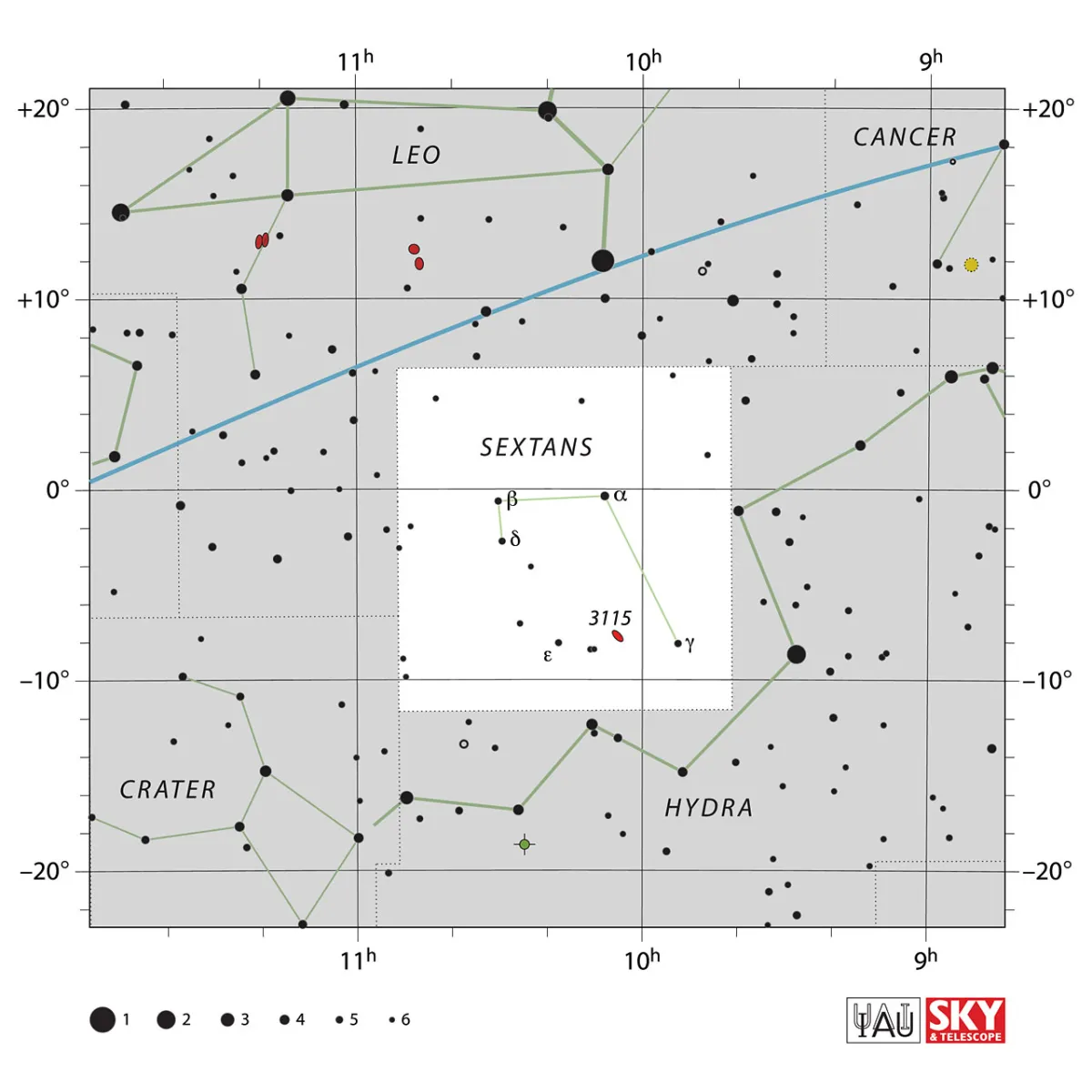Constellation Sextans (Sextant)

Properties
Sextans is a small and inconspicuous constellation south of Regulus in Leo with an area of 314 square degrees. It only consists of 4th and 5th magnitude stars and each culminates around midnight on February 21. [9, 15]
| IAU Name | Sextans |
| IAU Genitive | Sextantis |
| IAU Abbr. | Sex |
| English Name | Sextant |
| Culmination at local midnight | 20 February |
| Season (Latitude +0.0°) | October … July |
| Right Ascension (J2000.0) | 09h 41m 05s … 10h 51m 30s |
| Declination (J2000.0) | -11° 39' 44" … +06° 25' 58" |
| Area | 314 deg2 |
| Neighbours (N↻) | Leo, Hya, Crt |
Deep-Sky Object Descriptions
Catalogues

History
The mayor of Danzig, Jan Hevelcke (Latinized Hevelius) introduced some new names for places in the sky where there are few stars in his book Prodromus Astronomiae in 1690. This endeavor can be explained by the fact that there were no internationally recognized limits of the constellation systems at that time, which resulted in a lot of confusion. Therefore one wanted to fill up all these empty places with more small constellations. This is how the symbol of the sextant got into the star maps. Hevelius himself knew how to make sextants and also used them to measure the positions of the stars after the telescope had long been invented. [7, 21]